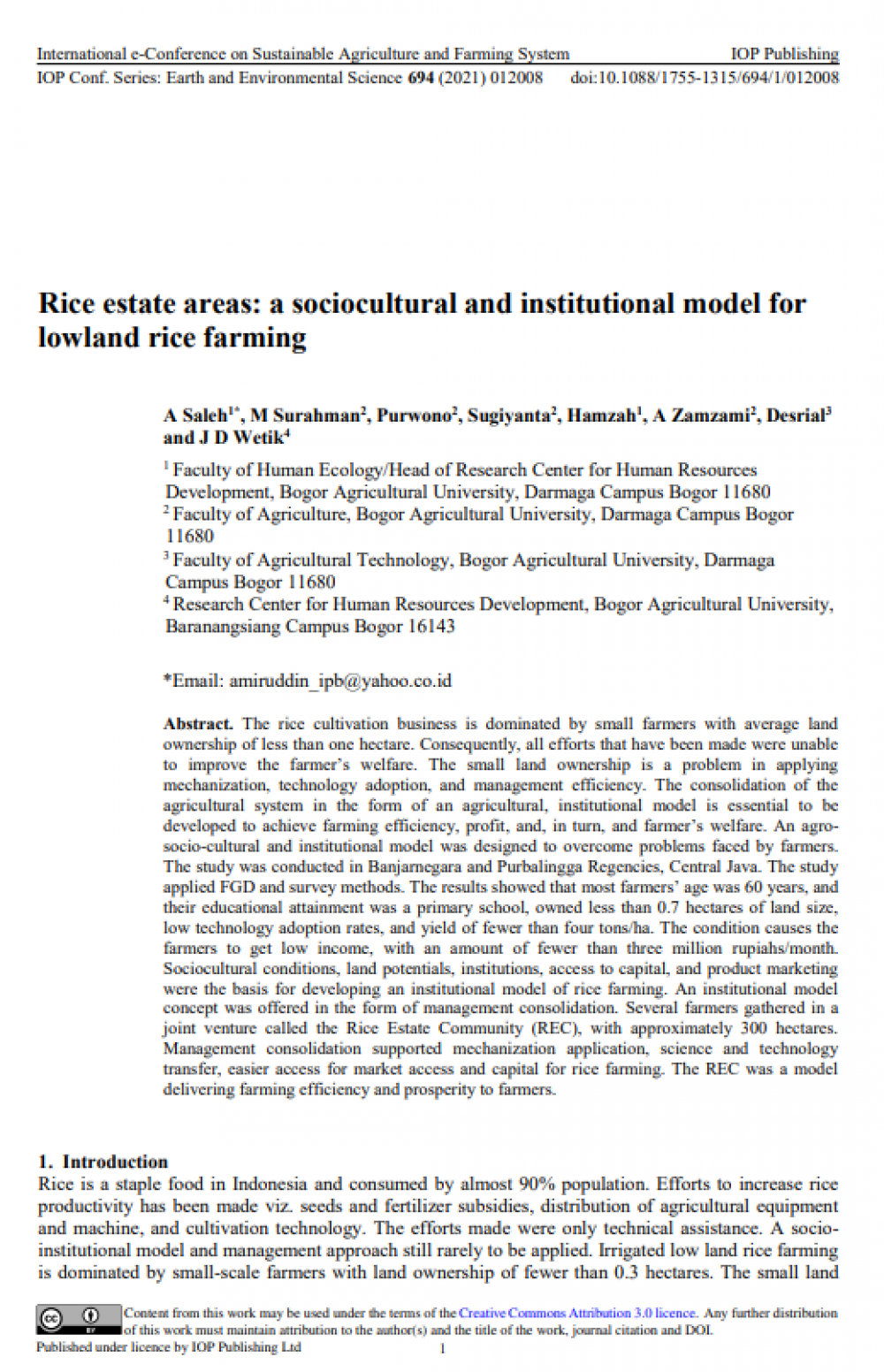
| Judul | : | Rice estate areas: a sociocultural and institutional model for lowland rice farming |
|---|---|---|
| Tahun | : | 2021 |
| Penulis | : | Dr. Ir. Amiruddin Saleh MS, Dr. Drs. Hamzah M.Si, M surahman, Purwono, Sugiyanta, A Zamzani, Desrial, J D Wetik. |
| Abstrak | : | The rice cultivation business is dominated by small farmers with average land ownership of less than one hectare. Consequently, all efforts that have been made were unable to improve the farmer’s welfare. The small land ownership is a problem in applying mechanization, technology adoption, and management efficiency. The consolidation of the agricultural system in the form of an agricultural, institutional model is essential to be developed to achieve farming efficiency, profit, and, in turn, and farmer’s welfare. An agrosocio-cultural and institutional model was designed to overcome problems faced by farmers. |
| Link | : | doi:10.1088/1755-1315/694/1/012008 |
| File | : |